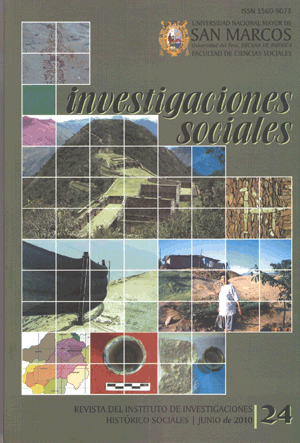Beaterios in Colonial Lima. The case of a pious noble indigenous women
DOI:
https://doi.org/10.15381/is.v14i24.7289Keywords:
Beaterio, Pious, Andean nobility, Virgen de Copacabana, Education, Aspirations, Decline, Recovery, Goods, Income, Expenses.Abstract
The Christianization of Peru, in which the Spanish priests put a lot of care and strategies, took the sons of the Inca nobility and curacal as the main catechumens. That resulted in their children, little by little, feel attractive by the Catholic religion, to the point that many teens act out their desire to follow an ecclesiastical career. To this end, the late seventeenth century, was founded in Lima a pious for women belonging to the aristocracy of the Andes. He was called Beaterio de Nuestra Señora de Copacabana, located in the Paseo de los Descalzos. It endured many vicissitudes, but has managed to survive until today with the status of convent, dedicated to the education of girls.Downloads
Published
Issue
Section
License
Copyright (c) 2014 Waldemar Espinoza Soriano, Mery Baltasar Olmeda

This work is licensed under a Creative Commons Attribution-NonCommercial-ShareAlike 4.0 International License.
AUTHORS RETAIN THEIR RIGHTS:
a. Authors retain their trade mark rights and patent, and also on any process or procedure described in the article.
b. Authors retain their right to share, copy, distribute, perform and publicly communicate their article (eg, to place their article in an institutional repository or publish it in a book), with an acknowledgment of its initial publication in Investigaciones Sociales.
c. Authors retain theirs right to make a subsequent publication of their work, to use the article or any part thereof (eg a compilation of his papers, lecture notes, thesis, or a book), always indicating the source of publication (the originator of the work, journal, volume, number and date).













